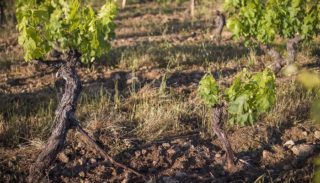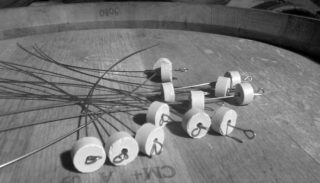October in the cellar
20 October 2020
“Vineyard and cellar – 1910” is a series of articles that we present to you throughout the year 2020, month by month. The articles are taken from the 1910 “Wine Trade Directory” and describe the various works necessary for the grapes and wine production at the beginning of the 20th century.
October in the cellar
In 1910 in October, the work in the cellar was marked by the follow-ups of fermentations, the devatting of the reds, and the barrels for the start of aging.
Here is what you can read in October in the Wine Trade Directory of 1910
Devatting – During fermentation, the winegrower will not lose sight of his vats for a moment. Little by little the movement and the noise are calmed down in these containers. If we examine the wine, still thick and cloudy, the fermentation seems finished; however it is not, there is still an insensitive one that turns the rest of the sugar into alcohol; this second part of the fermentation must, in principle, end in the barrels or in the tuns where the wine will be drawn. We have also seen that the devatting varies according to the wines to be obtained.
The best way is to draw the wine from the lower part of the tank by a tap or a pump, or finally from a pitcher, which is less good. Often, in the wine-making tank, the state of the liquid at different heights is not the same; by immediately devouring it in barrels, we run the risk of not having a uniform quality in all. To avoid this defect, we will start by drawing in a large container, then we will enter the barrels; sometimes we equalize lightning.
Entonnage – All receptacles intended to receive the wine will be in a perfect state of cleanliness. For a certain period of time, which always varies with the conditions that prevailed during the harvest and the vinification, the fermentation seems to continue in the containers; there is still release of carbonic acid; it will therefore be necessary to wait until this internal movement is completely finished before hermetically closing the casks or barrels; when filling them, add the quantity of wine necessary to fill them up, that is to say to fill them up.
Pressing the marc – Once the wine has run out, all that remains in the vat is the marc; it is removed, it is carried under the press, the liquid part that it still contains is extracted. In general, the yield of pressing is equal to a third of what was collected directly. It is called “press wine”, while the product obtained first is “free-run wine”.
Topping – This operation is essential to preserve the wines from alterations. It avoids, by practicing, the injection. Shortly after devatting, toasting should take place every two or three days, because the wine, in its very first youth, evaporates more quickly then every eight days. There are devices that work automatically, glowing without the need to monitor their operation. But most often we fill it up by pouring wine out of jugs. In all cases, use wine of the same quality as that contained in the barrel.
In fine vineyards, the wines of the previous year are racked for a third time.
Nowadays in October
The red wine making process is still very similar to what is described in the wine trade directory. Alcoholic fermentation converts sugar into alcohol by the action of yeasts. The density of the liquid will then change during this step. This is because sugar is heavier than alcohol. This characteristic has made it possible to develop very precise fermentation control methods by analysis or by monitoring the density of the must and then of the wine. When we want to produce so-called “dry” wines, that is to say without residual sugars, the analyzes then make it possible to check that there is no sugar left in the wine, that the fermentation is then well over. Subsequently, the breeding can begin. They can take place in barrels, in wooden, stainless steel, concrete, terracotta (amphora type) vats or in fiber.







